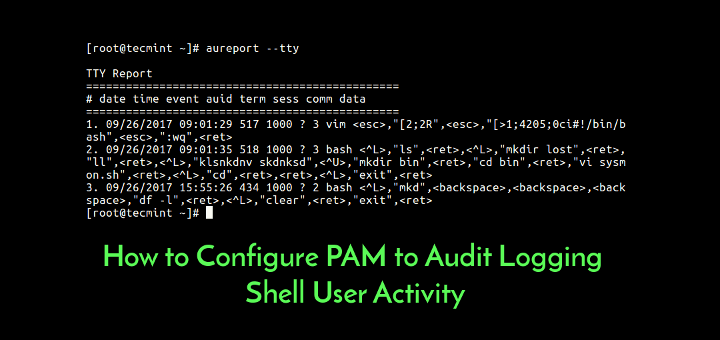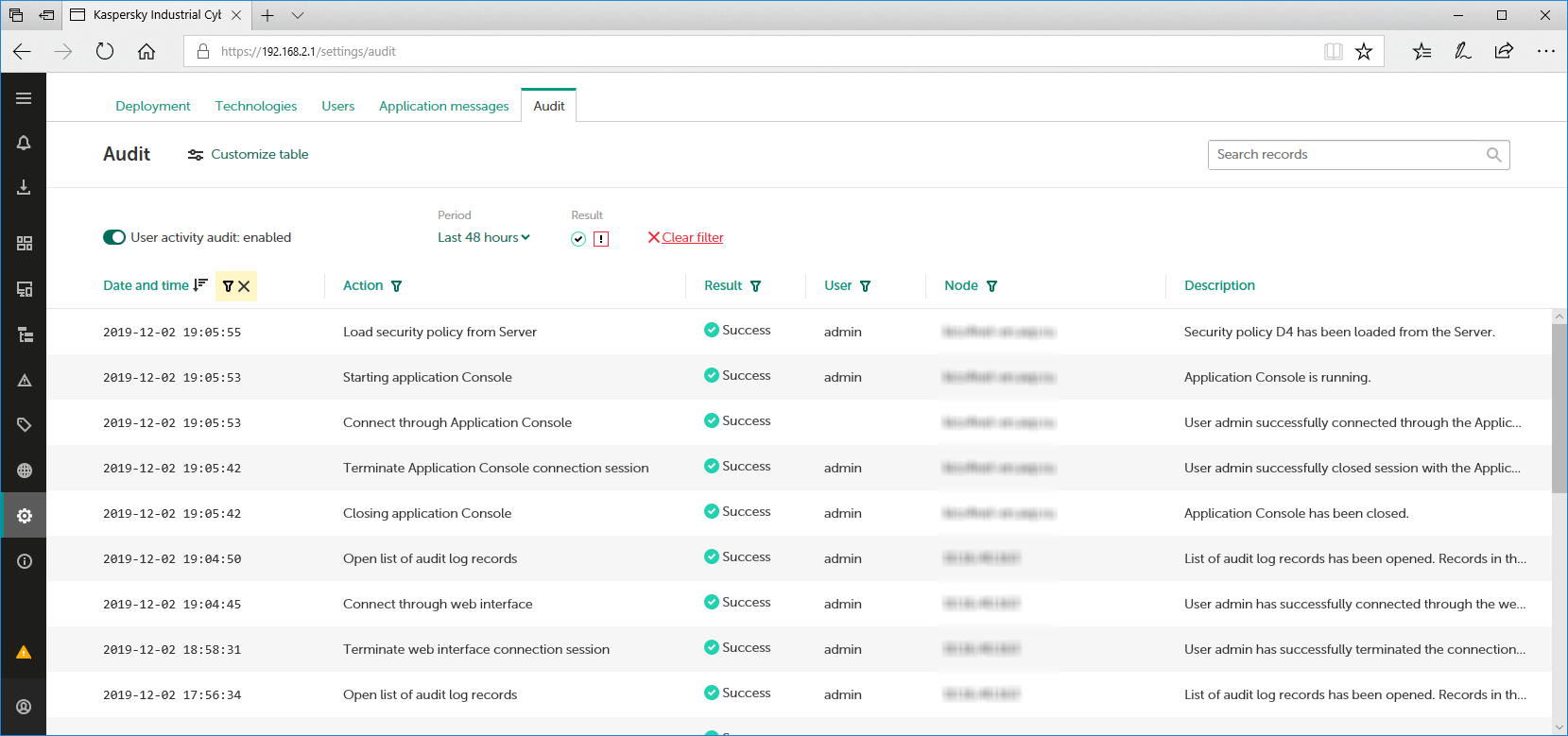
#User activity audit code
These queries can be parsed by the error code that's provided in the log. For example, a query will be logged because of a syntax error or because the user doesn't have the privileges necessary to access an object. Queries are also logged if they cannot be executed, if they're unsuccessful. An alternative is to use TABLE event type instead of the query-related event types.

So make sure that only trusted users have access to the log files and that the files are in a protected location. This is a security vulnerability: anyone who has access to the log files will be able to read the queries. The queries will be logged exactly as they are executed, in plain text. If QUERY, QUERY_DDL, QUERY_DML, QUERY_DML_NO_SELECT, and/or QUERY_DCL event types are enabled, then the corresponding types of queries that are executed will be logged for defined users. Connects need to be logged for all types of users access to objects need to be logged only for physical users. This is because auditing standards distinguish between technical and physical users. This list will be ignored, though, for the loggings of connect events. It's possible to define a list of users for which events can be excluded or included for tracing their database activities. For a failed connection, the log includes the error code. If the Audit Plugin has been configured to log connect events, it will log connects, disconnects, and failed connects. Previously, a log entry would be truncated due to long query strings. In the same version, the server_audit_query_log_limit variable was added to be able to set the length of a log record. Starting in version 1.3.0 of the Audit Plugin, there is the QUERY_DCL option for logging DCL types of queries (e.g., GRANT and REVOKE statements). Since there are other types of queries besides DDL and DML, using the QUERY_DDL and QUERY_DML options together is not equivalent to using QUERY.
#User activity audit password
Similar to QUERY, but filters only DCL-type queries ( CREATE USER, DROP USER, RENAME USER, GRANT, REVOKE and SET PASSWORD statements) (since version 1.4.4) ( DO, CALL, LOAD DATA/XML, DELETE, INSERT, UPDATE, HANDLER and REPLACE statements) Similar to QUERY_DML, but doesn't log SELECT queries. Similar to QUERY, but filters only DML-type queries ( DO, CALL, LOAD DATA/XML, DELETE, INSERT, SELECT, UPDATE, HANDLER and REPLACE statements) RENAME USER is not logged, while CREATE/DROP are only logged from MariaDB 10.2.38, MariaDB 10.3.29, MariaDB 10.4.22, MariaDB 10.5.13 and MariaDB 10.6.5. Similar to QUERY, but filters only DDL-type queries ( CREATE, ALTER, DROP, RENAME and TRUNCATE). Queries executed and their results in plain text, including failed queries due to syntax or permission errors

Once exported this will contain every item in this database record.Connects, disconnects and failed connects -including the error code Once enabled by support you can export this to an Excel Spreadsheet by going to configure, export files and then selecting the Table To Export of Stores an audit of what information a user has accessed. The User Activity Audit can also be exported to an Excel Spreadsheet when logged into EXACT as an administrator with a setting enabled by support "" Printing,the report to a physical printerĮxporting this report to an Excel Spreadsheet

Viewing a family appointment (audits for each family member) Note that a crash is not logged as a log out. Where this applies to family data, the user activity is logged separately against each family member. User Activity Audit example with a practitioner Login action highlighted:Īny logged-in practitioner activity that in any way touches or potentially exposes a patient's data is audited. The User Activity Audit logs user actions that in any way touch on or enable viewing of patient data.
#User activity audit software
The User Activity Audit is a reporting / management tool that records actions in the EXACT database, from where authorised Software of Excellence users can access them when necessary. This feature is only accessible to authorised Software of Excellence personnel via ToolS, View Database, USERACTIVITYAUDIT


 0 kommentar(er)
0 kommentar(er)
